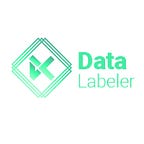5 Strategies to make way for Successful Data Labeling Operations
The global market for data annotation and labeling reached USD 0.8 billion in 2022 and is projected to grow at a CAGR of 33.2% to reach USD 3.6 billion by the end of 2027. Data labeling activities are now a crucial part of creating and training a computer vision model.
Managing the entire lifecycle of data labeling and data annotation, from sourcing and cleaning through training and creating a model production-ready, is the responsibility of thefunction known as data labeling operations.
Engineers in machine learning and data science aren’t all-powerful. Data operations teams are a group of hardworking individuals who work behind the scenes to get computer vision projects ready for production.
Let’s now examine 5 methods for designing efficient Data Labeling Operations
1).Recognize the use case :
Data ops and ML leaders must be aware of the issues they are attempting to address for agiven use case before starting a project. Creating a list of questions and discussing themwith senior leadership is a useful activity for figuring out the goals of the project and thebest ways to achieve them.Now it’s time to start putting together a team, methods, and workflows for data labelingactivities once you’ve gone through the answers to these questions.
2).Create instructions and documentation of labeling workflows :
If you approach data operations from a data-centric perspective, you can treat datasets — including the labels and annotations — as a component of your project’s and organization’s intellectual property (IP). making it much more crucial to record the entire process. Labeling process documentation enables the development of SOPs, which increases the scalability of data operations. Additionally, it is crucial for keeping a data pipeline that is transparently auditable and compliant as well as protecting datasets from data theft and cyberattacks.
Before a project begins, operational workflows must be designed. If you don’t, once thedata starts streaming through the pipeline, the entire project is at risk. Clarify yourprocedures.Before the project begins, get the necessary operating procedures, budget, and seniorleadership support.
3).Make your ontology extensible to account for the long term:
It’s crucial to make your ontology expandable whether the project requires video or pictureannotation, or if you’re employing an active learning pipeline to quicken a model’s iterativelearning process.An extendable ontology makes it simpler to scale, regardless of the project, use case, orindustry, including whether you’re annotating medical image files like DICOM and NIfTI.
4).Iterate quickly and incrementally:
Start small, learn from tiny failures, iterate, and scale your data labeling operations routine are the best ways to ensure success. If not, you run the danger of attempting to annotate and categorize too much data at once. Because annotators make mistakes, there will be more mistakes to correct. Starting with a larger dataset and trying to annotate and classify it will take more time than if you start with a smaller dataset. You can scale the operation after everything is functioning properly, including the integration of the appropriate labeling tools
5).Implement quality control, use iterative feedback loops, and keep getting better:
Quality assurance/control and iterative feedback loops are essential to developing and putting into practice data operations. Labels must be verified. Make sure the annotation teams are using them properly. Check the model for bias, mistakes, and problems. There will always be mistakes, inaccurate information, incorrectly labeled picture or video frames, and bugs. You may lessen the quantity and effect of errors, inaccuracies, incorrectly labeled photos or video frames, and bugs in training data and production-ready datasets by using suitable AI-powered, automated data labeling, and annotation technology.
Select an automation technology that works with your quality control workflows to hasten the correction of defects and errors. This will provide you with more time and more efficient feedback loops, especially if you’ve used micro-models, active learning pipelines, or automated data pipelines.
Create More Efficient Data Labeling Operations with Data Labeler
You can create data labeling operations that are more productive, safe, and scalable with Data Labeler, an automated tool used by top-tier AI teams. Data Labeler was developed to increase the effectiveness of computer vision projects’ automatic image and video data labeling. Additionally, our system reduces errors, flaws, and biases while making it simpler, quicker, and more cost-effective to manage data operations and a group of annotators. Contact us to know more!
